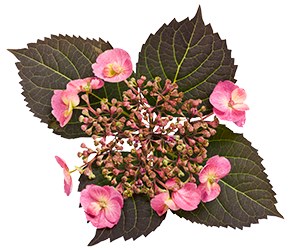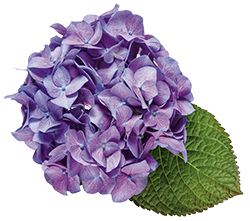HOW TO GROW ROSE MALLOW
Enjoy the beauty of the tropics in your garden year after year with Hibiscus moschuetos, a cold-tolerant perennial hibiscus.If you’re not familiar with rose mallow, get ready to be amazed, especially if you garden in a northern climate. This often overlooked native perennial offers all the exotic floral beauty of tropical hibiscus (Hibiscus rosa-sinensis) but is tough enough to overwinter outdoors in areas as far north as Minnesota.
Like tropical hibiscus, rose mallow boasts huge, vibrantly colored flowers, some growing to the size of dinner plates. But once your hardy hibiscus bursts into bloom, it will continue flowering until the first frost and then return again in spring for a repeat performance. Despite its tolerance for cold weather, rose mallow also loves the heat and grows equally well in balmy southern climates.
On this page: Basics | Planting | Care and Maintenance | Pictures
On this page:
Buy rose mallow plants from Proven Winners.
BASICS
Botanical name:
Hibiscus moscheutos
Common names:
Common rose mallow, swamp mallow, swamp hibiscus, dinner plate hibiscus; also shares the common name hardy hibiscus with Hibiscus syriacus.
Zones:
4-9
Height/Spread:
3 to 8 feet tall, 2 to 5 feet wide
Growth rate:
Fast. New growth is slow to emerge from dormancy in spring, but plants shoot up rapidly once they take off, growing as much as an inch per day.
Exposure:
Full sun
Soil:
Mostly native to swampy areas, rose mallow prefers evenly moist, humus-rich soil. If necessary, mulch to help retain moisture.
Bloom Time:
Midsummer until the first frost. Although the flowers only last a day or two, rose mallow is a prolific rebloomer.
Flower Color:
White, pink, red, or bi-colored, often with a contrasting eye.
Foliage:
Broad, triangular, and deeply lobed. Usually medium green, but some cultivars have deep purple, coppery red, or blue-tinged foliage.
What to look for when purchasing rose mallow plants:
When shopping for rose mallow, look for plants labeled as indeterminate, which indicates that the flowers are produced all the way up and down the stems and not just at the tip, like determinate varieties. Indeterminate bloomers, such as those in the Summerific® series from Proven Winners, will produce flowers for months on end, giving you a longer season of interest. Summerific® plants are not prone to setting seed, which can be a big plus if you don’t want your plants to self-sow in the garden.
PLANTING
When to plant:
In spring or fall, as long as there is no danger of frost.
Where to plant:
In full sun (at least 6 hours daily). In hot climates, it may be necessary to provide some afternoon shade to prevent scorching of the foliage. Also provide shelter from strong winds, which can damage the delicate, crepe-papery flowers. Because of rose mallow’s preference for wet soils, it thrives in low spots and wetter areas along streams or ponds. However, it will tolerate a wide range of soil types if kept well-watered.
How to plant:
Start seeds indoors in early spring and then transplant outdoors once the weather warms or purchase potted plants from a nursery. When planting, be sure to give plants plenty of elbow room to accommodate their eventual spread. If necessary, amend sandy or poor soil with compost or other organic matter before putting your plants in the ground.
Companion plants:
Because of its colossal blooms, rose mallow makes a bold statement wherever you plant it, so be sure to use it judiciously so it won’t steal the show from the other plants in your garden. It’s best used as a backdrop for sun-loving groundcovers or plants with strappy foliage that will add nice textural contrast to the broad leaves. Get more ideas for good companion plants to grow with rose mallow.
Use in combination with spring bloomers such as creeping phlox or Jacob's Ladder. Since hardy hibiscus are late to emerge, plants like these can carry the workload for the first half of the year.
CARE
Water:
Water regularly and up to twice a day in hotter weather, especially if growing in a container. Wilting leaves are a sure sign that your plant needs a good soaking. To avoid leaf fungus and other foliar diseases, water during the early morning hours rather than late in the evening.
Fertilizer:
Once new growth appears in spring, sprinkle a slow-release organic plant food around the root zone and then supplement with a water-soluble plant food in early summer, when the buds begin form, to boost flower production.

When properly planted and cared for, you can get many flowers from one rose mallow plant (shown is Summerific® 'Cranberry Crush'). Photo by: Proven Winners.
Pruning:
When you see new growth begin to emerge in spring, prune back the old woody stems to about 6 inches tall to make way for the new foliage. To stimulate branching and promote a bushier habit, you can prune the tips of the branches in early summer.
Deadheading:
Deadheading of spent blooms isn’t necessary unless you want to prevent seedpods from forming.
Overwintering:
In colder climates, apply a layer of mulch around your plants after they die back in the fall to provide an extra layer of insulation. While plants are dormant, water only enough to keep the soil moist.
Rose mallow growing in a pot can generally be left outdoors unless temperatures are expected to drop below 20 degrees F for a prolonged period of time. During a cold snap, take precautions by moving the pot to an unheated interior space, such as a garage or garden shed, until the temperatures warm up again.
Diseases and Pests:
Particularly vulnerable to Japanese beetles and sawflies. Leaf fungus can also be a problem but is easy to control by maintaining good air circulation around the plant and by removing diseased leaves.
ROSE MALLOW PICTURES
Featured in: Garden Design's Top 10 Garden Trends for 2022 ("Including Plants that Transport You to the Tropics")
RELATED:
How to Grow Rose of Sharon
Flowering Shrubs
Tropical Gardens















